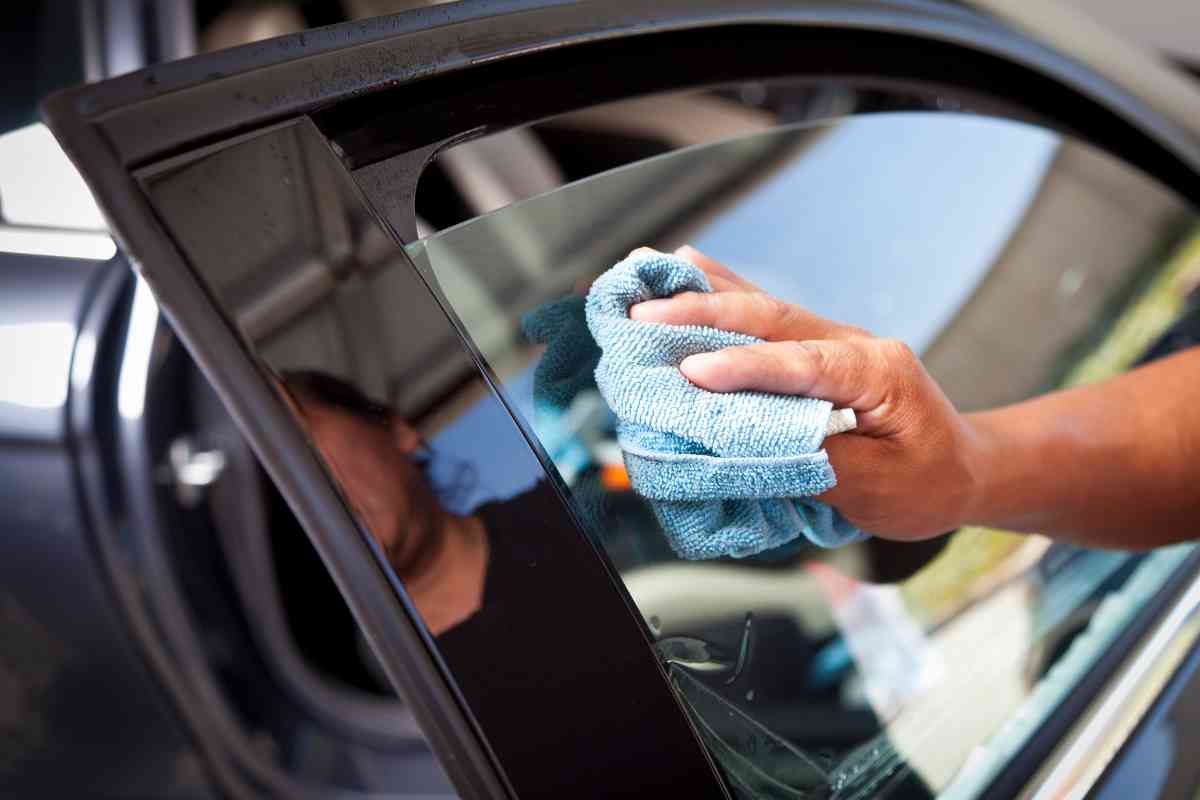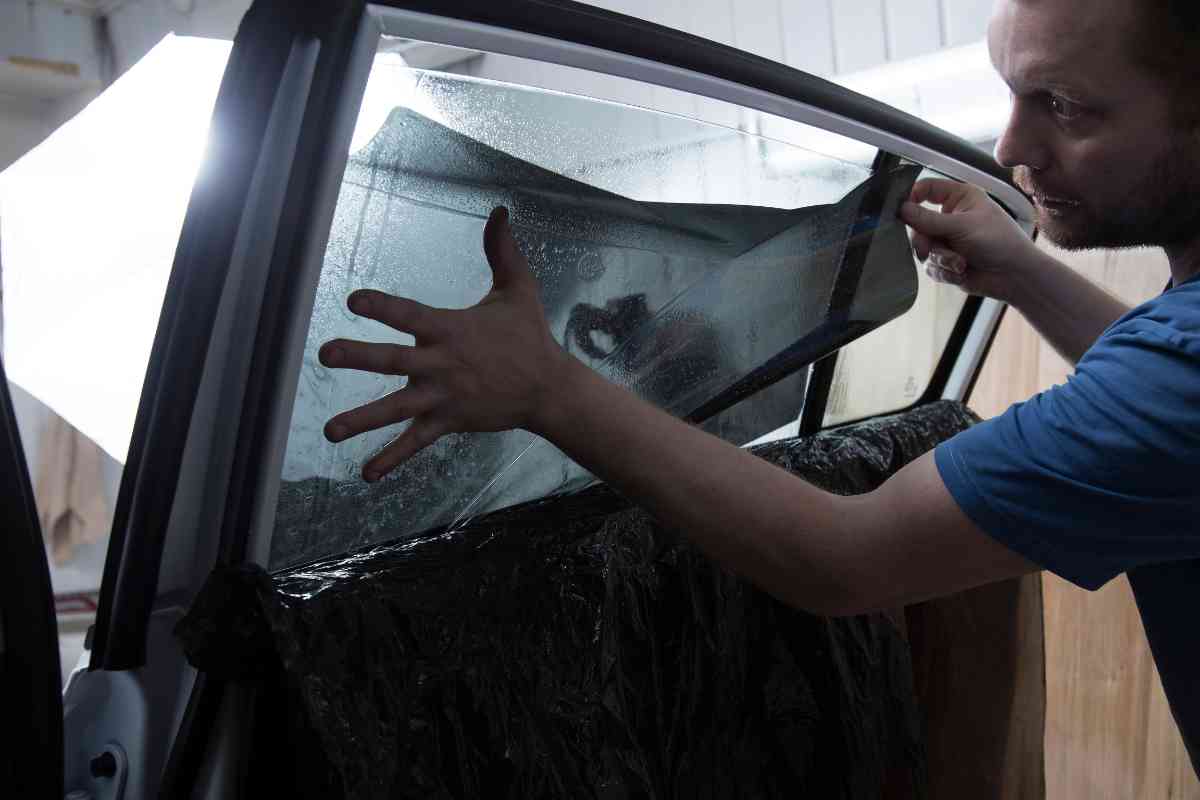The first few days after tinting your car windows are crucial for perfecting its appearance. Window tinting provides car owners numerous benefits, making it a worthwhile investment.
It enhances protection against harmful UV radiation, enhances the vehicle’s aesthetics, security, and privacy, and even improves fuel efficiency.
When you choose to invest in car tinting, it becomes essential to understand the necessary actions to take after selecting and installing the window tint films.
It is crucial to be aware of what you should and should not do to maintain the quality of your tinted car windows. In this article, we will cover the 4 things you have to do after tinting car windows.
Let’s get started!
4 Things You Have To Do After Tinting Car Windows
The following are four things you have to do after tinting your car windows:
1. Put Off Washing Your Car for Now
The good news is that the tinted window film is applied to the car’s interior, so driving through dirt or mud won’t threaten a newly tinted window.
However, washing the windows soon after installation can introduce moisture that hampers the drying process. It’s best to wait until you know the tint has fully cured before washing your car.
2. Allow the Window Tint to Dry Properly
It may require some patience, but the ultimate goal is to ensure that the tinted window film dries entirely before engaging in activities that could compromise its integrity.
In sun-soaked locations like San Diego, the drying process can be expedited, and typically, window tint cure times are shorter during the summer months, usually two to four days.
However, in colder winter months or during rainy periods, the drying time can be significantly extended, even up to a month.
Although such prolonged waiting periods are less common for window tint installations in San Diego, there are steps you can take to accelerate the drying process.
Parking your car in direct sunlight on clear days can be beneficial, while parking indoors is recommended on cooler or rainy days and overnight days.
3. Avoid Rolling Down Your Newly Tinted Windows
After tinting your car windows, one thing to do is to avoid rolling the windows down.
The tint needs time to dry and bond securely to the glass; rolling down the windows too soon can interfere with the curing process and damage the tint.
If the tint hasn’t fully adhered to the glass, rolling down the windows can sometimes result in unsightly bubbles and wrinkles.
Once enough time has passed, you can confidently resume regular use of your car, knowing that your tinted window film will maintain its pristine condition.
4. Exercise Patience When Dealing with Air Bubbles in Your Window Tint
Anyone who lived through the 1980s knows the dreaded air bubbles that can mar the appearance of cheap window film, permanently damaging the tint.
However, if you notice bubbles shortly after installation, they are more likely caused by moisture and will typically dissipate within a few days as the tint cures.
The exact duration for the bubbles to vanish will depend on the climate, but it is advisable to give it a minimum of four days.
How To Clean Your Tinted Windows

1. The Two-Towel Technique
You can use two buckets for washing and rinsing, just like caring for your car’s coating. The initial bucket should contain the cleaning solution you have procured, while the rinse bucket should be filled with water exclusively.
2. Choose an Appropriate Cleanser
Avoid using ammonia-based cleansers. These products contain chemicals that can harm your recently tinted windows, causing the film to deteriorate. Therefore, consult your car detailer to obtain their recommended cleanser.
3. Adopt Cross-Directional Wiping on the Exterior
When cleaning the exterior surface of the window, employ a horizontal wiping motion. Conversely, opt for a vertical wiping pattern for the interior side of the window before transitioning to the second microfiber towel for the final cleaning stage.
By employing this technique, you will swiftly identify any streaks or missed spots and ascertain their location, whether on the outside or inside of the glass, based on their horizontal (exterior) or vertical (interior) orientation.
Tinted Window Maintenance Tips
Irrespective of whether you have chosen ceramic or dye-based window tinting for your vehicle, there are specific measures you can take to uphold the pristine appearance of your freshly tinted windows and prevent any potential deterioration.
- Exercise care when releasing your seat belt, as abrupt movements can potentially harm the tinted film or lead to glass chipping.
- Handle the seat belt with care and avoid flinging it off forcefully.
- Promptly address any encounters with bug splatters, bird droppings, or other foreign substances that may come into contact with the tinted surface. Timely removal of these elements will help prevent staining or damage to the tint.
- Be cautious about the materials you use for cleaning. Avoid using paper towels, cotton brushes, or washcloths, as these can inadvertently cause harm to the tint. Instead, opt for microfiber or other non-abrasive materials to clean automotive surfaces.
- While window tints generally require minimal maintenance, it is essential to prioritize diligence to ensure long-lasting results and prevent potential issues.
- Before leaving the auto tinting installation, consult your professional car detailer for additional aftercare guidelines and suitable products to enhance desired outcomes.
- It is crucial to avoid using ammonia-based cleaners, as they can compromise the integrity of the tinted film.
- Opt for alternative cleaning solutions your professional car detailer recommends to ensure optimal preservation.
Advantages of Tinting Your Car Windows
Tinting your windows has many benefits aside from it being aesthetically pleasing:
1. UV Radiation Protection
Window tinting effectively blocks much detrimental ultraviolet (UV) radiation from infiltrating the vehicle.
This is a crucial safeguard, shielding the occupants and the car’s interior from the adverse consequences of UV rays, such as the fading and degradation of upholstery and dashboard surfaces.
2. Heat Reduction
Tinted windows significantly reduce heat penetration into the vehicle, creating a more comfortable interior environment, particularly during sweltering summer months.
By curbing the influx of heat, the reliance on excessive air conditioning is minimized, resulting in enhanced fuel efficiency.
3. Glare Reduction
Tinted windows are valuable in minimizing glare caused by sunlight, headlights, and other light sources.
This improves visibility and reduces eye strain, ensuring safer and more comfortable driving conditions, especially in bright or sunny settings.
4. Enhanced Privacy
After tinting your car window, it can provide an elevated level of privacy and security by impeding the prying eyes of external observers.
This advantage is particularly beneficial when transporting valuable belongings or for individuals who prefer a heightened sense of privacy during their journeys.
5. Interior Preservation
Tinted windows protect against sun-induced damage, effectively preventing the fading and cracking of upholstery, dashboards, and other interior surfaces.
The overall value and visual attractiveness are maintained by preserving the aesthetic appeal and integrity of the vehicle’s interior.
6. Shatter Resistance
Tint film adds a layer of protection to the glass, rendering it more resistant to shattering upon impact.
In the event of an accident or attempted break-in, the tint film holds the shattered glass fragments together, mitigating the risk of injuries caused by flying shards.
7. Aesthetic Enhancement
Tinting your car windows can significantly enhance the vehicle’s overall appearance, imparting an elegant and stylish demeanor.
This aesthetic transformation adds an element of sophistication and complements the exterior design, elevating the vehicle’s visual allure.
Frequently Asked Questions
How Do I Remove Air Bubbles From My Tinted Windows?
Immediately after tinting your car windows, minor air bubbles are usually temporary and should dissipate as the tint film cures.
Being patient during the curing process is crucial, as forcefully attempting to remove the bubbles can damage the film.
If the bubbles persist after a few weeks, it’s best to consult your tinting professional for expert advice.
Can I Use Window Defrosters After Tinting?
Yes, you can safely use your window defrosters after tinting. Most quality tint films are designed to withstand the heat generated by defrosters.
However, it is recommended to allow a few days for the tint film to cure before using the defrosters at high temperatures.
How Do I Maintain the Tinted Windows for Longevity?
To maintain the longevity of your tinted windows, avoid using harsh chemicals, abrasive cleaners, or ammonia-based products.
Use a soft cloth or microfiber towel for cleaning, and avoid scratching the tint with sharp objects.
Regularly clean the windows to remove dirt and debris that could damage the tint film.
Can I Tint My Windows in Cold or Rainy Weather?
While it is possible to tint windows in cold or rainy weather, it may affect the drying and curing process of the tint film.
Tinting should be done in a controlled environment with optimal temperature and humidity.
It’s best to consult a professional tinting service to determine the most suitable conditions for the installation.
When Can I Roll Down My Windows After Tinting?
It is generally recommended to wait at least 2-3 days before rolling down your windows after tinting. This allows the tint film to adhere properly to the glass.
However, the exact timeframe may vary based on the type of tint film used and the weather conditions. It’s best to consult your tinting professional for specific instructions.
Related:

